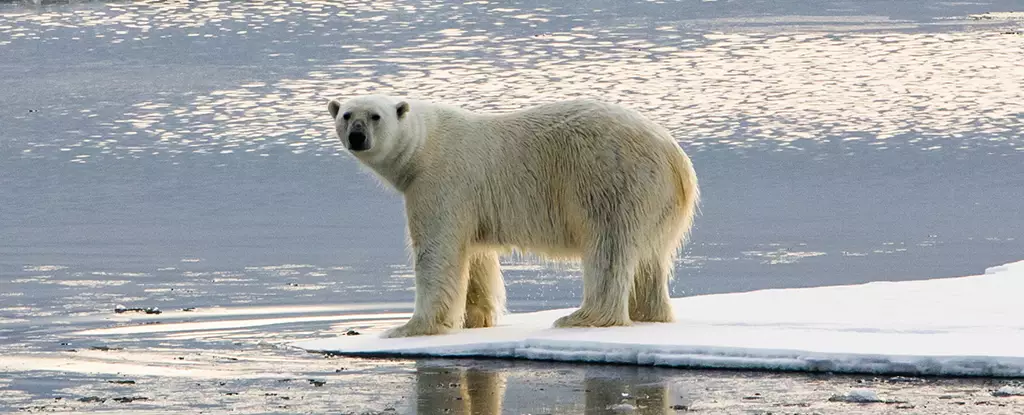The Arctic region is witnessing a severe transformation due to climate change, with particular attention drawn to an area termed the “Last Ice Area” (LIA). This zone is projected to be the last bastion of perennial sea ice, harboring essential ecosystems that depend on this icy habitat. However, recent studies, notably from researchers at McGill University, reveal alarming trends indicating that this vital region may vanish sooner than many experts had anticipated.
The LIA, situated predominantly between the Queen Elizabeth Islands and parts of the Canadian Arctic Archipelago, is not only the epicenter for remaining ice but also crucial for various wildlife. For instance, the region is home to a significant population of polar bears, seals, and several indigenous communities that rely heavily on this environment for sustenance. The urgency tied to the preservation of the LIA emphasizes the critical intersection between climate change and ecological balance.
The revised estimates concerning the fate of the LIA stem from advanced simulation models known as the Community Earth System Model. Unlike prior models, this innovative approach meticulously incorporates variables such as sea currents and ice flow dynamics, offering a more nuanced understanding of how quickly the LIA is likely to succumb to seasonal ice melts. The implications of this improved modeling are profound; predictions suggest that by 2035, the central Arctic Ocean could experience yearly seasonal ice-free periods, thrusting the LIA into a precarious position.
According to atmospheric scientist Bruno Tremblay, the research indicates that the disappearance of the last permanent ice could occur within a mere two decades following the establishment of seasonal ice-free patterns. This timeline underscores a dramatic shift in our understanding of ice resilience under changing climatic conditions.
The likely ramifications of ice loss extend deep into ecological territory. Numerous species rely on the LIA for survival, where stable ice zones provide critical hunting and breeding grounds. The dire situation paints a bleak picture, as evidenced by the poignant anecdotes of walruses depicted in the 2019 documentary “Our Planet.” Faced with diminishing sea ice, these marine mammals have resorted to hazardous land climbs, with devastating consequences. The plight of these creatures highlights a broader trend of ecological destabilization resulting from ongoing climate change.
Researchers point to the northern part of the LIA as a pivotal area for the maintenance of sea ice. This section appears to act as a buffer, slowing down sea ice transport and allowing thicker seasonal ice to accumulate, thus revitalizing wildlife habitats. The loss of this buffer would further imperil the stability of the entire LIA and disrupt wildlife that depend on its ice-covered sustenance.
It’s crucial to recognize that the ramifications of the LIA’s decline resonate beyond the animal kingdom; they significantly affect indigenous peoples living in the Arctic region. The diminishing ice is not merely an environmental concern; it strikes at the very heart of cultural heritage and subsistence practices tied to the sea ice. Hunting patterns, traditionally built upon stable ice conditions, face disruption, threatening food security and cultural continuity for these communities.
The significance of the LIA has led to protective measures like the establishment of the Tuvaijuittuq Marine Protected Area. This initiative embodies a recognition of the LIA’s importance and the need for vigilance against climate threats. The term “tuvaijuittuq” translates to “the place where the ice never melts,” reflecting the deep connection and reverence for this ice-covered habitat among indigenous populations.
The findings emerging from this ongoing research serve as a clarion call for concerted climate action. The startling predictions regarding the LIA’s timeline underscore the urgent necessity for global efforts aimed at reducing greenhouse gas emissions. As asserted by scientist Madeleine Fol, these revelations emphasize the importance of stabilizing our climate to protect not only the LIA but also the critical habitats intertwined within the Arctic ecosystem.
As we stand on the precipice of environmental upheaval, the fate of the Last Ice Area encapsulates a broader narrative regarding the planet’s health. This moment calls for an amalgamation of scientific insight and proactive policy actions to safeguard not just the ice itself, but the intricate web of life that depends upon it. The future of the LIA and its resident species hangs in the balance, urging humanity to take decisive measures before it is too late.

Leave a Reply